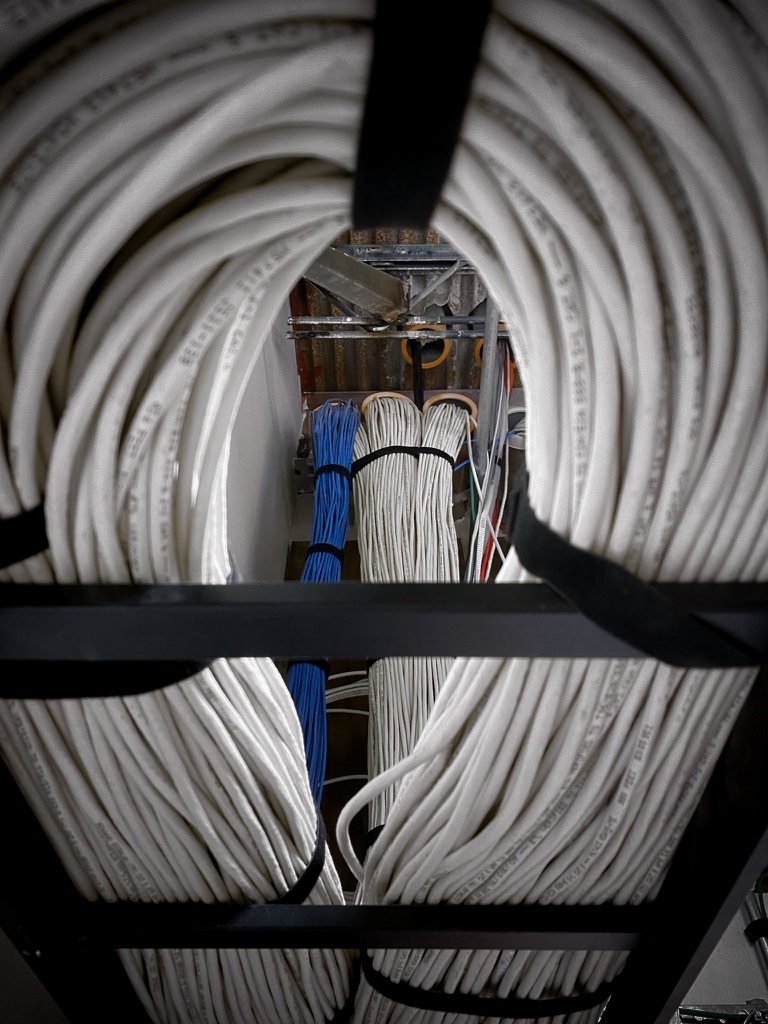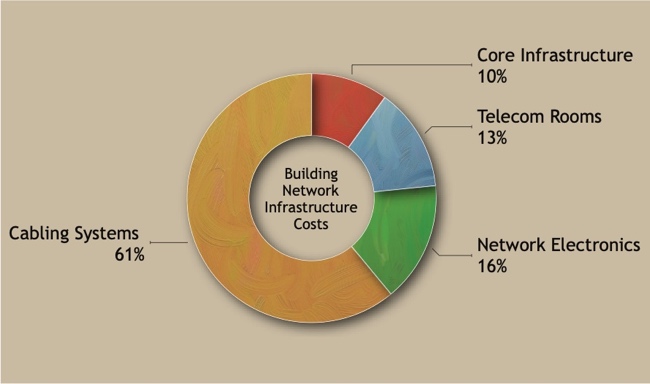
Over the past year, the Engineering unit within ITS Communication Technologies completed a study that will help the team provide more accurate budgets to planners preparing to build or renovate buildings for campus departments.
The Communication Technologies study looked at the costs of outfitting a new campus building or renovation with network technology. This includes the basic infrastructure needed to support network communications such as wiring, telecommunications rooms, switches, wireless access points, and access to campus fiber. Prior to this study, the University had never analyzed or even calculated these total construction costs.
Having a better understanding of network infrastructure costs will help the group advise campus leaders on network infrastructure purchases that will meet the needs of faculty and students more pragmatically and economically. It will also help position the campus strategically over the long-term life of the building.
“The processes that we’re hoping to improve have to do with budget analysis,” said Tyler Johnson, a Communication Technologies engineer. “This knowledge will enable us to look at what we designed, how much it is supposed to cost, how much it cost after we built it, and compare.”
Surprising findings
Communication Technologies discovered that the University’s network infrastructure costs are in line with the industry at around $10 per square foot. This can add up to several million dollars on a large research lab like Marsico Hall, one of the facilities modeled for the study.
But the group also stumbled upon some surprising results in the analysis, like finding that cost associated with physical wiring far exceeds the cost of network electronics.
“The network electronics is the part we see and touch and we had always thought it was the big cost, like routers and switches,” Johnson said.

Instead, Communication Technologies found that network electronics account only for 16% of the overall costs, while cabling systems are a dominant 61%. This means that 61% of the total network cost goes to the labor and materials used to run wiring throughout buildings.
“Basically, if you did an all wireless building you could eliminate 61% of the cost because there’s no wiring to get out to the offices,” Johnson said.
Internet of Things era
This finding is especially salient because of the evolving balance of wired and wireless networking for campus buildings.
“What happened was in the old days every gate card, fax machine, thermostat or camera had its own wiring and wasn’t a part of the campus data network. They were totally separate and didn’t touch the internet,” Johnson said.
As technology has evolved, many of these technologies have migrated to be internet aware and have been added to the campus data network.
And while users across the University are migrating to wireless, the Internet of Things, which is largely dependent on more expensive wired infrastructure, is growing. This redistribution of costs presents funding challenges for campus leaders.
Supports Carolina’s mission
This analysis was a first step towards the group’s goal of being more knowledgeable about the costs of network infrastructure to advise departments looking to build or renovate.
Having a better grasp of network infrastructure costs is a key part of making sure that the University is meeting educational and research needs.
“The research and education mission is really relevant in this context,” Johnson said. “You can’t have the conversation about doing things right until you know exactly what it is you’re doing.”
